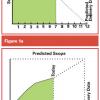Planning
Better Software Magazine Articles
|
|
Rescuing a Captive Project Allowing an individual to hold a project hostage to his knowledge and expertise is bad for the project and for the team. Fiona Charles describes one captive project and shows how it could have been remedied. |
|
|
Predicting the Past Developing an accurate prediction process is complex, time consuming, and difficult. But, basing predictions on causality rather than correlation and learning how to "predict the past" can help us gain confidence in the validity of our work. |
||
 |
Feel the Burn: Getting the Most Out of Burn Charts Burn-down charts have become a popular project artifact, but too often, people accept the default chart from whatever project management tool they're using. What choices can we make about the chart format and scale that will help us create charts that answer the questions that are really important to us? And when the chart looks "funny," what could it possible mean? |
|
|
|
Avoiding Half-baked Discovery It can be difficult to explain to your customer why cutting half of the features doesn't cut half of the time and cost. Every software project has fixed costs that often get overlooked in project planning—setting up development environments, ramp-up, building frameworks, and setting up configuration management to name a few. Read on for some ideas on how you can position this with your customer. |
|
|
Do You Know Why You Are Doing That? It's easy to get caught up in the inertia of a project and forget to ask exactly what we are developing, who our customers are, and what their goals with our software might be. Few software projects have the time and budget to figure out what their project is through trial and error. Getting clarity on project focus not only helps productivity, working to create software that people actually need increases our chances for success. |
||
|
Three Pounds of Manure in a Two-Pound Sack Multitasking is not a magical cure for getting too much work done by too few resources. Listen in as Payson Hall eavesdrops on a coaching session between two managers about how to assign and prioritize work. |
||
|
Learning from Experience: Software Testers Need More than Book Learning People often point to requirements documents and process manuals as ways to guide a new tester. Research into knowledge transfer, as described in The Social Life of Information, suggests that there is much more to the process of learning. Michael Bolton describes his own experiences on a new project, noting how the documentation helped ... and didn't. |
||
|
Are Your Pants on Fire, or Do You Suffer from Split Focus? Some schedule games—Split Focus and Pants on Fire—are the result of your management not making certain decisions about the project portfolio. Without those decisions, your project has problems. In this column, Johanna Rothman explains what you can do when the problems on your project are caused by your management’s lack of decision making. |
||
|
What's a Manager to Do? Self-organizing teams still need managers. But those managers need to rethink how they do their jobs and consider how much self-management the team can take on. Finding the sweet spot between hands on and hands off is the key. |
||
|
|
Don't Fear the Repartee Conflict reduces people's productivity and generosity toward the organization and their coworkers. These four steps can help defuse a conflict situation and improve the chances for a solution that at the least, both parties can live with. |












